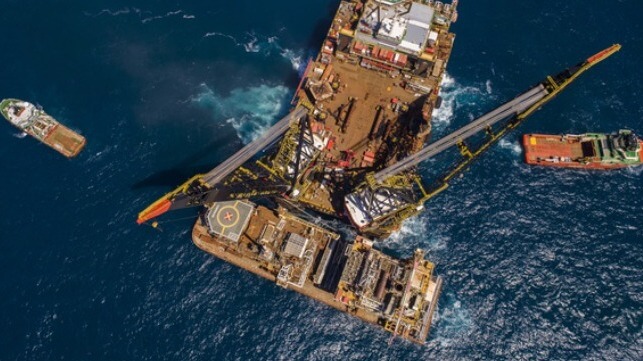Offshore Wind, Decom Market Compete for Heavy-Lift Tonnage

The capital- and labor-intensive work of decommissioning North Sea oil and gas infrastructures over the next decade could run into competition from offshore wind, according to Offshore Energies UK (OEUK). Both activities use many of the same skillsets and vessels, and as these assets are mainly being directed to renewables, it could cause bottlenecks meeting the demand for decommissioning services.
Over 2,100 North Sea wells involved in oil and gas extraction are set to be decommissioned at a cost of around $24 billion over the next decade, according to OEUK. Massive resources in vessels and workforce are being directed towards renewables, mainly offshore wind and carbon capture and storage (CCS). Europe is leading the race in investment as it moves away from ‘dirty’ fossil fuels, in line with its net zero ambitions.
The offshore wind industry is expected to have a substantial impact on oil and gas decommissioning, since both industries have requirements for heavy lift vessels. The long campaigns for windfarm installations are already proving quite attractive for heavy lift operators when compared with brief, technically challenging decommissioning projects. Availability of heavy lift vessels is already a challenge: over the next two years, a total of 16 offshore wind installations will be under construction across Europe.
OEUK estimates that around 200 North Sea wells will be decommissioned annually at an average cost of $9.3 million per well over the next eight years. Over the next two years alone, the industry is expected to record an upsurge in activity considering there are 612 wells, 59 topsides, 58 substructures, 1,820 kilometer of pipelines and 14,029 tonnes of subsea infrastructure set to be decommissioned.
The sector is projected to continue growing as other emerging offshore energy technologies, like offshore wind farms, also require decommissioning services. With at least 209 offshore wind farms expected to be under construction over the next decade, this presents an opportunity for the supply chain to continue decommissioning beyond oil and gas.
“The UK’s decommissioning sector is snowballing and will continue growing for years to come. But this poses a challenge as well as an opportunity. The growth of renewables and demand for decommissioning services and expertise will create increasing pressure for resources,” said Ricky Thomson, OEUK Decommissioning Manager.

that matters most
Get the latest maritime news delivered to your inbox daily.
Over the next ten years, expenditure on decommissioning is predicted to total $24 billion, with well decommissioning comprising nearly half of the expenditure. The UK accounts for about three quarters of the North Sea’s well decommissioning work, topsides tonnage and substructure tonnage. The surge in work could sustain many UK jobs in industrial communities in nearby ports.
To address the emerging bottlenecks, OEUK suggests that the offshore wind, carbon capture and storage, and oil and gas sectors will need to coordinate and share information about planned projects.
